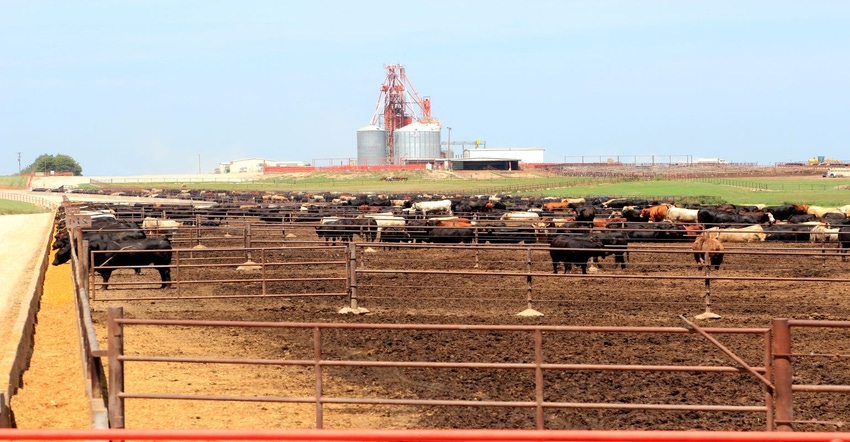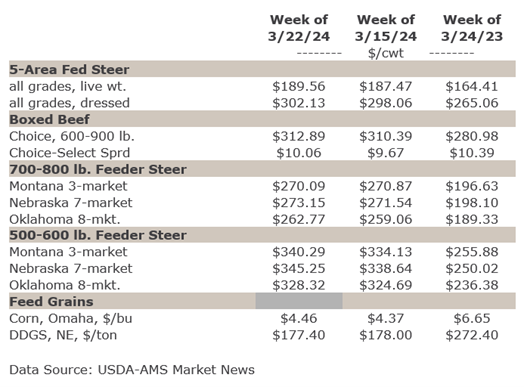Large feedlot placements and more on-feed
Feedlot inventory should begin to drop below year-before levels in next couple of months.
March 27, 2024

By David Anderson, Texas A&M AgriLife Extension Service
USDA’s latest “Cattle on Feed” report was largely as expected. Placements were a little higher than the pre-report estimates anticipated. Marketings met expectations, up 3.4% from last year with one more work day in February this year. That left 1.3% more cattle on feed than March 1, 2023.
Even though there were few surprises in the report, the placement data is worth a closer look. Placements up 9.7% may have been a surprise for some who know we have fewer cows, fewer calves and falling beef production. A rare event occurred in placements in that more cattle were placed in February than in January. Fewer cattle are usually placed in February due, in part, to it being a shorter month. How do we get placements that much ahead of last year? Timing is part of the answer. A large winter storm in January likely pushed some placements back. Unseasonably warm weather in February probably pulled some placements ahead, especially given that the warm weather started wheat growing and cattle needed to be pulled off if the wheat is to be harvested. Placements in all weight classes greater than 700 pounds were more than 10% larger than last year.
Placements over the last 2 months are less than 1% above last year. Over the last year, placements have been about 0.5% smaller than the year before. Placements in 2023 were boosted by heifers going to feedyards instead of being held for herd replacement and a few more feeder cattle from Mexico.
What to watch for
The next “Cattle on Feed” report will have the quarterly breakdown of steers and heifers on feed. That may give some clues on heifer placements. The number of cattle on feed continues to be larger than a year ago, boosted by placements and cattle remaining on feed longer. The number on feed should begin to drop below year-before levels in the next couple of months.
The markets
The cutout has shown an increasing trend in recent weeks. While the cutout has been supported by the end meats this winter, the last couple of weeks has seen increasing loin prices. Wholesale strip loins have increased from $805/cwt. to $965/cwt. over the last six weeks and are currently more than $200/cwt. than last year. The rib has yet to show much increase.

You May Also Like


.png?width=300&auto=webp&quality=80&disable=upscale)
